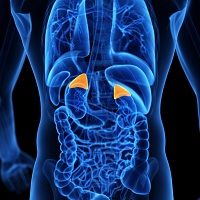Article
Low-Dose ACTH Stimulation Test: Hold Your Horses!
Author(s):
A low-dose adrenocorticotropic hormone (ACTH) stimulation test is more sensitive in patients with cases of mild hypoadrenalism, and the high-dose test often misses secondary hypoadrenalism due to pituitary or hypothalamic dysfunction. Endocrinologists still debate test result interpretation for the low-dose test, however.

The gold standard for diagnosing adrenal insufficiency (AI) is the adrenocorticotropic hormone (ACTH) stimulation test. After studies in the 1960s demonstrated that the 250 mcg ACTH dose used in what came to be called the High Dose ACTH stimulation test may be too high, many endocrinologists embraced the Low-Dose ACTH Stimulation Test using 1 mcg ACTH. The low-dose test is more sensitive in patients with cases of mild hypoadrenalism, and the high-dose test often misses secondary hypoadrenalism due to pituitary or hypothalamic dysfunction. Endocrinologists still debate test result interpretation for the low-dose test, however.
The May 2015 issue of Endocrine Practice includes a study that addresses this controversy. Some institutions assess the LDST for cortisol secretion adequacy at 30 minutes; others assess at 60 minutes. This retrospective chart review compared 30 and 60 minute assessments.
The researchers looked at charts from a single pediatric endocrinology unit over 7 years. Eighty-two patients (37% female, mean age 11.7 years) had completed the LDST. An endocrinologist had evaluated patients’ cortisol levels at baseline and 30 and 60 minutes after cosyntropin administration.
These researchers defined cutoff adrenal sufficiency as peak cortisol level ≥18 mcg/dL. A significant proportion of patients—slightly more than half—peaked at 60 rather than 30 minutes. Eleven patients who failed the test at 30 minutes actually passed it at 60 minutes. Had the test been stopped at 30 minutes, they would have been labeled as having AI, when in fact, they did not.
Of note, overweight and obese individuals tended to peak at 30 minutes, and normal and underweight individuals tended to peak at 60 minutes. The researchers have no clear explanation why ACTH-stimulated cortisol levels might differ based on weight.
These researchers recommend measuring cortisol at 30 and 60 minutes following synthetic ACTH administration to avoid overdiagnosing AI.




